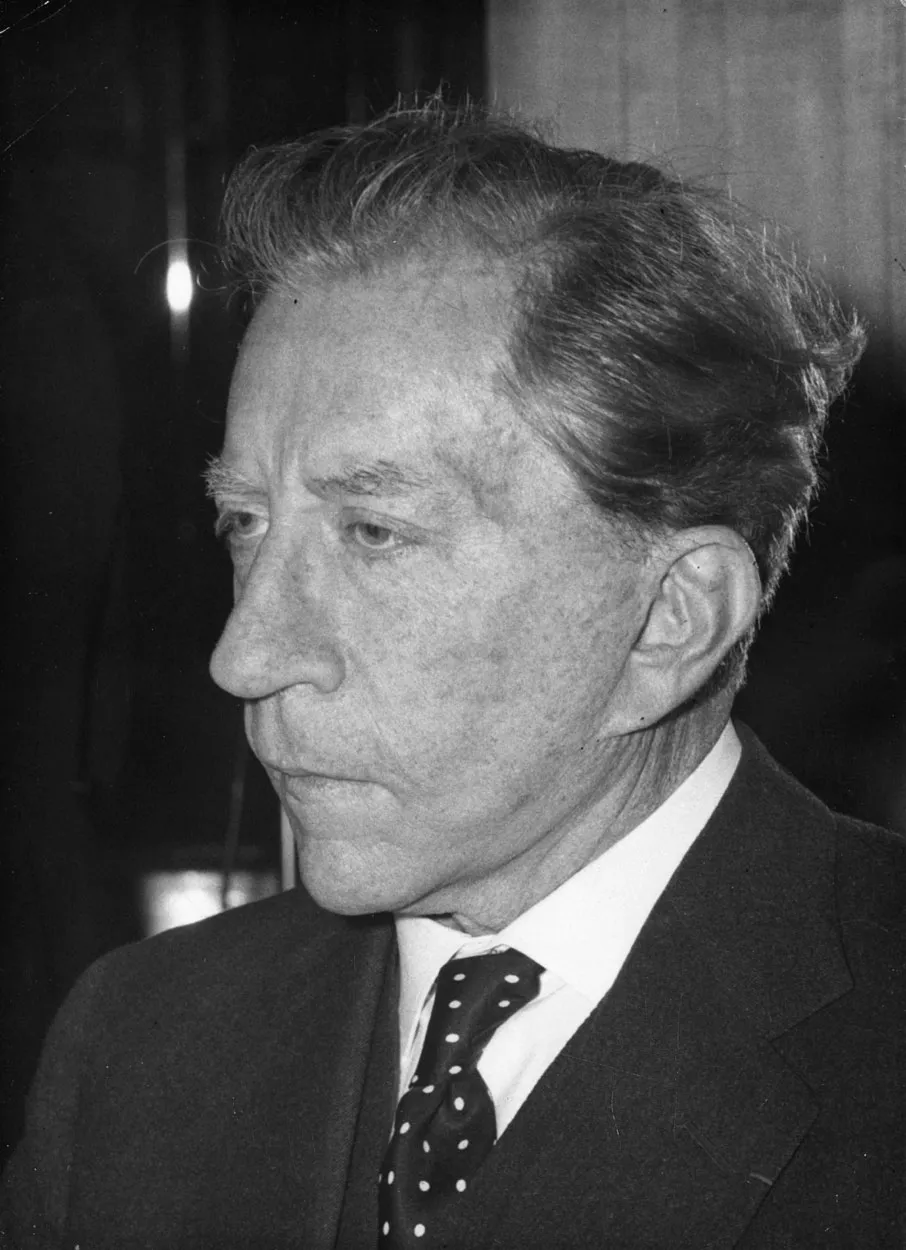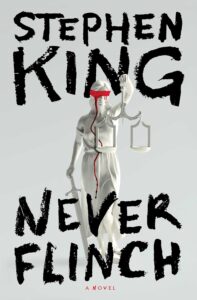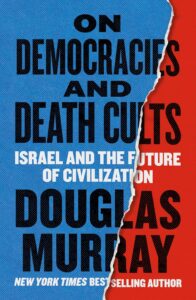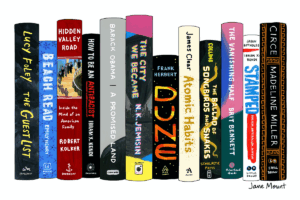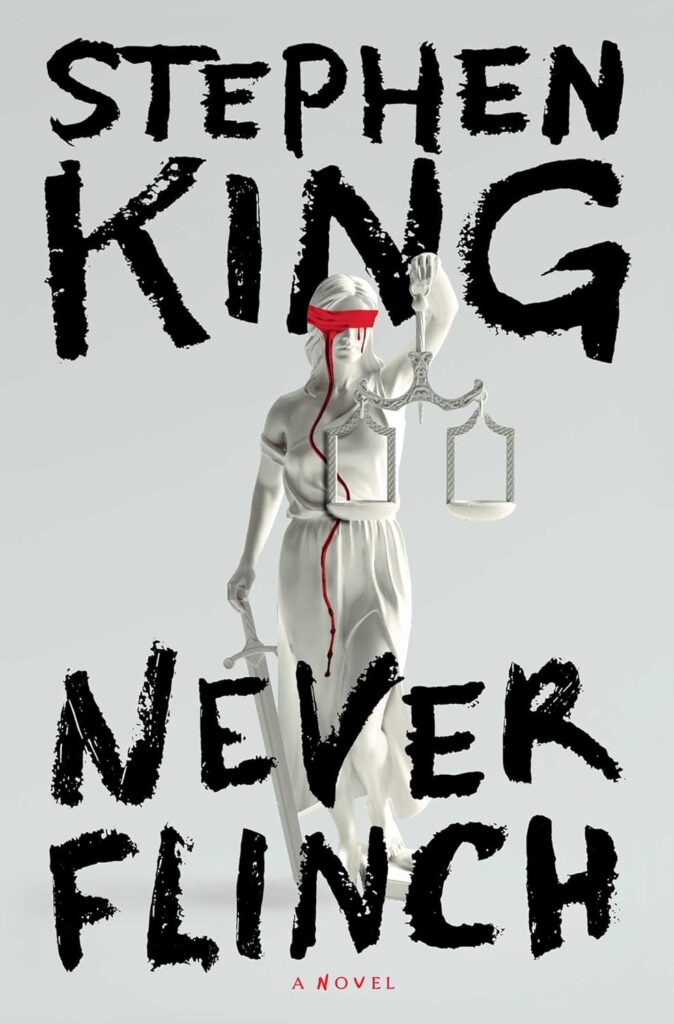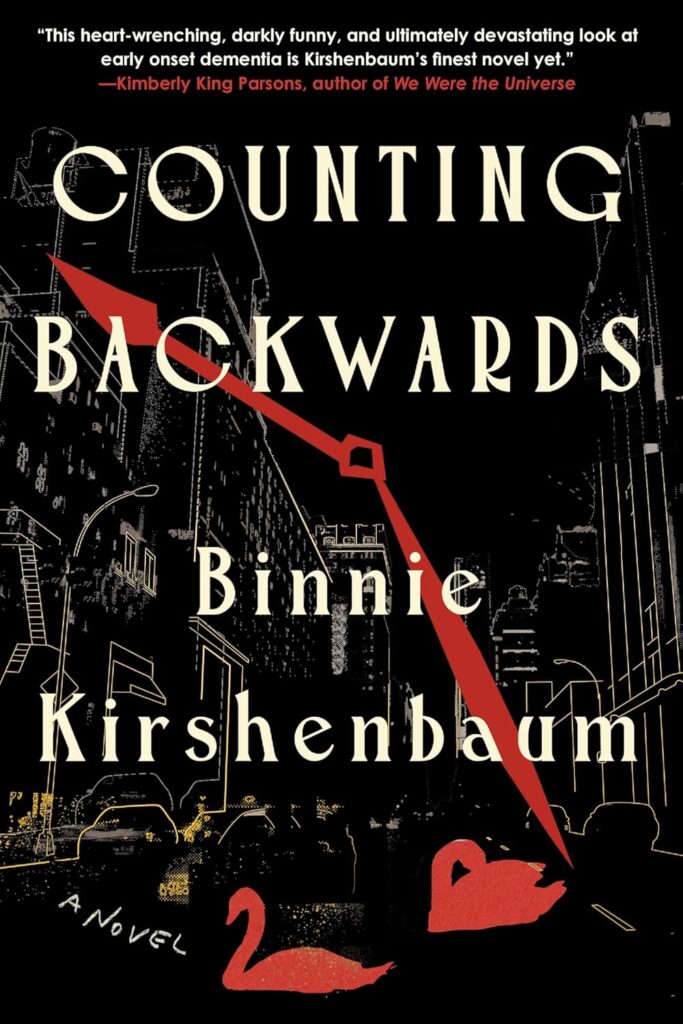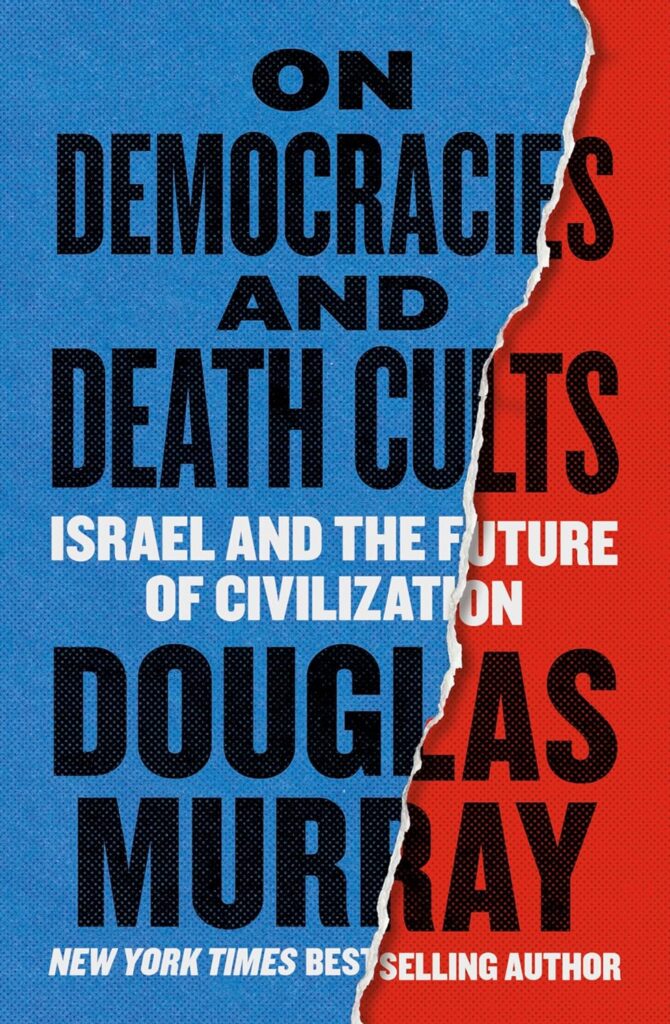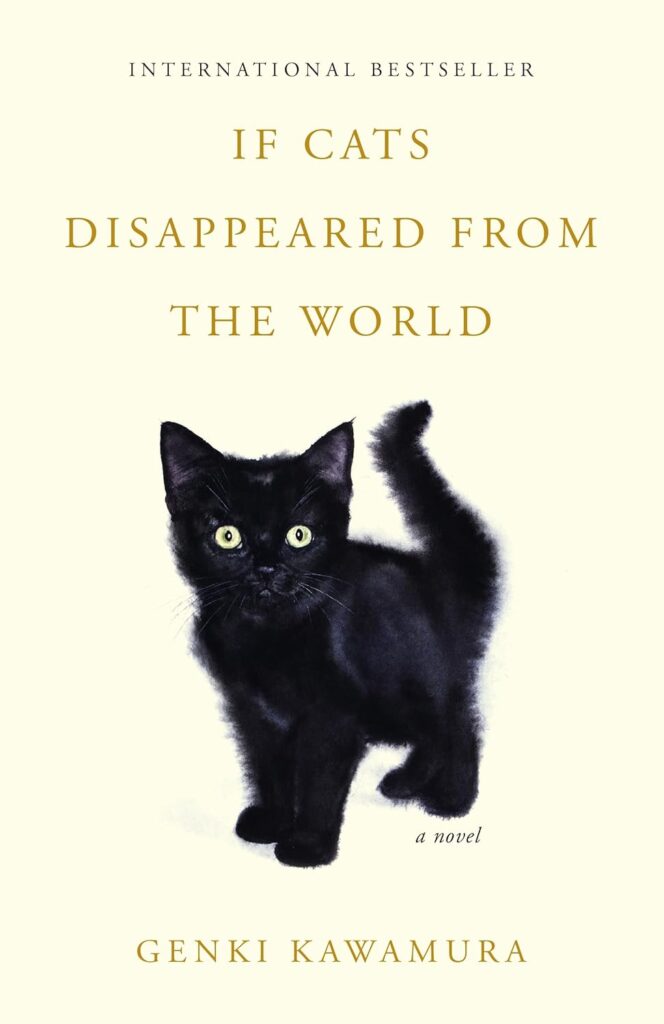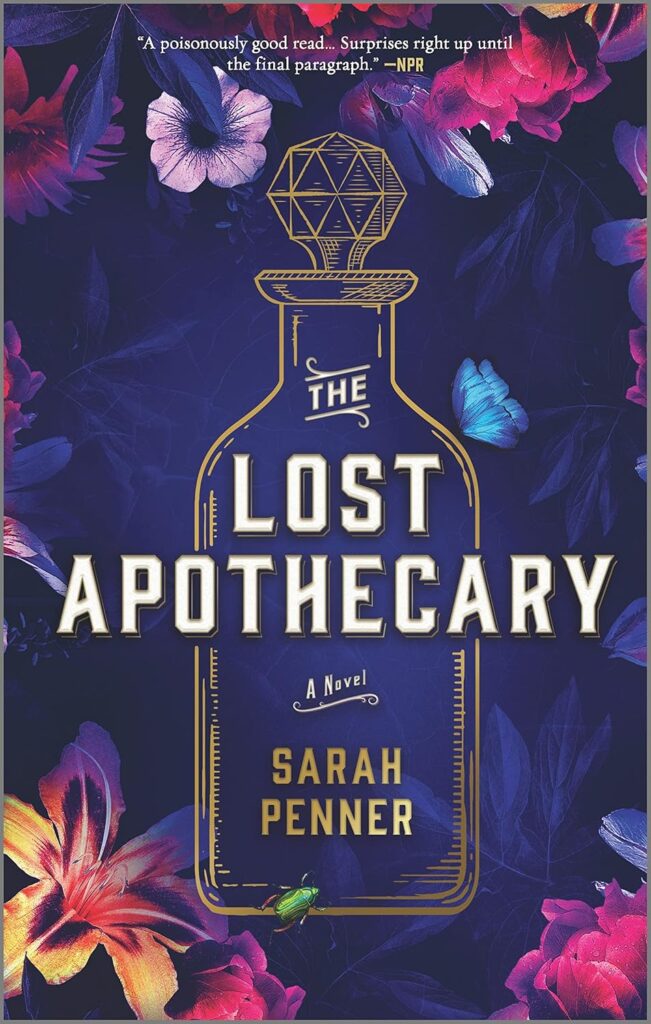J. Paul Getty. The name feels heavy, doesn’t it? Like it’s not just a person but an idea—or maybe even a legacy. Getty wasn’t just wealthy; he was legendary. Sure, he owned oil wells and built an empire that stretched across continents, but what stands out to me is how he invested much of that wealth not in yachts or castles (well, okay, maybe a castle or two) but in art. Ancient sculptures, Renaissance paintings, tapestries that whisper stories if you stare long enough. Getty turned his passion for collecting into something that honestly feels like a gift to the rest of us.
If you’ve ever strolled through the light-drenched halls of the Getty Center in Los Angeles or wandered the picturesque gardens at the Getty Villa in Malibu, you already know what I mean. His vision wasn’t small: it was the whole history of art, laid out for everyone to experience, for free. That’s wild, right? A guy once named the richest man in the world leaves behind not just a business legacy but spaces where anyone—no matter their background—can connect to something timeless.
Table of Contents
The Life and Rise of J. Paul Getty
J. Paul Getty wasn’t just a guy who stumbled on wealth—he was a product of his upbringing, choices, and a sheer knack for seeing opportunities where others hesitated. His life story feels like one of those epic novels, full of ambition, drama, and an almost relentless drive to prove something to the world—and maybe to himself too.
Early Life and Family Background
J. Paul Getty was born on December 15, 1892, in Minneapolis, Minnesota, but don’t picture him as just some regular Midwestern boy. His dad, George Getty, was already onto something big with the early oil boom, and his mother, Sarah, had this intense belief in education and discipline. It’s like J. Paul inherited his dad’s shrewdness and his mom’s insistence on doing things the “right” way. But let’s not romanticize it—this family wasn’t exactly churning out warm hugs and bedtime stories. They had lofty expectations.
In 1905, the Getty family packed up and moved to California. It wasn’t exactly Hollywood glamour yet, but it was packed with opportunities—a frontier bursting with potential. J. Paul Getty graduated high school at 15, which honestly, already feels intimidating. He bounced around schools, attending the University of Southern California and then moving to UC Berkeley before graduating from Oxford in England. Yes, Oxford. He studied political science and economics, which, honestly, feels like the most “future oil tycoon” major you could choose. The dude was clearly soaking in everything; the world of academia, the intersections of politics, and the kind of calculations that would later define his empire.
But let’s circle back to his dad, George. He wasn’t just some dad spewing clichés like “You can do anything you put your mind to.” He mentored J. Paul as a businessman, schooling him on investments and how to work the oil game. And here’s the kicker—George loaned him money to start his ventures, but it wasn’t some blank check with no strings attached. J. Paul had to prove he could turn that investment into gold, or in this case, oil. This family dynamic shaped him, pushing him towards success but also instilling this fierce independence that totally defined his career.
For more, check this biography source and Britannica’s profile.
Building an Oil Empire
Let’s just say it how it is: building an oil empire in the 20th century was messy, brutal, and not for the faint-hearted. J. Paul Getty didn’t just enter the game—he dominated it. And it didn’t happen overnight. A big moment came in 1916, when, at just 24, he made his first million in Oklahoma oil. Take that in: 24 years old. I mean, I was still trying to sort out my career choices at that age.
The Oklahoma oil patch was his testing ground, but Getty wasn’t content with quick wins. He dug deeper. By the 1930s, during the Great Depression, Getty was out there sweeping up struggling oil companies for pennies on the dollar. He wasn’t just buying assets; he was playing chess while everyone else was playing checkers. Sounds ruthless? Maybe. But the world of oil doesn’t exactly reward soft hearts.
The real game-changer came in 1949 with Saudi Arabia. Getty secured a 60-year concession to drill for oil in the neutral zone between Saudi Arabia and Kuwait. This deal wasn’t a mere business move—it was a massive gamble. Drilling in the Middle East wasn’t like drilling in Texas. But it paid off. By the mid-1950s, the profits from this deal would solidify Getty Oil as one of the biggest players in the energy sector.
Some people say Getty wasn’t a great team player—he was single-minded and obsessive. But let’s be real: that’s exactly why he succeeded. He wasn’t looking to be liked; he was looking to win. And win he did. By the 1960s, he was named the “richest man in the world,” a title he carried like armor. For more detailed insights on Getty’s oil acquisitions, Britannica has a fantastic overview or check this Forbes exploration.
You see, Getty’s story isn’t just about money—it’s about recognizing the long game. A way of turning calculated risks into unshakeable successes, one oil well at a time. Ideas weren’t just theoretical for this guy; they were tangible, molten-black barrels of reality. If anyone ever wondered what sheer willpower and vision could build, just say, “Getty.” Enough said.
A Passion for Art: J. Paul Getty the Collector
J. Paul Getty wasn’t just an oil tycoon; he was an obsessive art collector with an almost encyclopedic love for history and beauty. His collection isn’t just stuffy paintings you glance at politely; it’s an immersive experience into the storytelling power of art. From ancient sculptures teeming with mythology to European masterpieces that make your heart stop for a second, Getty’s collection feels like an astonishingly curated time capsule. Honestly, to see what he amassed is to understand a man who viewed art not as decoration but as essential as air or light.
Highlights of Getty’s Art Collection
When you think of iconic art collections, Getty’s has to rank near the top. It’s the kind of assembly that makes other collectors look like they’re hoarding knick-knacks in comparison. One of the true standout pieces is the “Lansdowne Herakles,” a Roman marble sculpture depicting Hercules—biceps bulging, cape slung over his shoulder like a superhero before Marvel made it cool. Imagine walking into a room and seeing this majestic 6’4” figure that’s been around for, oh, almost 2,000 years. It’s the kind of thing that triggers goosebumps. Fun fact? Getty allegedly called it “the greatest acquisition” of his life. And honestly, same.
But there’s more—so much more. His collection includes pieces like Van Gogh’s “Irises” and Rembrandt’s “Abduction of Europa.” Each work isn’t just visually stunning; it’s layered with emotion and history. You don’t just look at these pieces—you kind of have conversations with them. They speak about the people who created them, the worlds they were born into, and somehow, also your own life.
Getty didn’t just stop at what was pretty or trendy, though. He also loved the raw and ancient: Etruscan vases, Byzantine frescos, illuminated manuscripts dripping with gold. When I walked through the galleries, it felt like holding history’s pulse in my hands. You can check out some highlights of Getty’s extraordinary collection on the Getty Museum’s website.
Transforming a Mansion into a Museum
Getty was this paradoxical guy—he loved privacy, yet he built a museum that’s practically a love letter to art lovers everywhere. In 1954, he opened the original Getty Museum inside his Ranch House in Pacific Palisades. Don’t picture some high-tech gallery here; it was legitimately a fancy house-turned-gallery. Walls were adorned with Old Master paintings while the mantelpieces showcased intricate Greek vases. Getty’s philosophy was crystal clear: this wasn’t about exclusivity but accessibility.
And then came the Getty Villa—his more ambitious and, let’s be real, slightly eccentric vision. Perched in Malibu like some ancient Roman complex teleported onto the California coast, the villa was inspired by the Villa of the Papyri in Herculaneum. It’s not just a museum; it’s a freaking vibe. Wandering its gardens with Mediterranean plants and listening to the whisper of fountains feels almost otherworldly. You can almost hear Getty saying, “Yes, I built this for you to escape reality for a while.”
The irony is that Getty never even saw this place fully come to life; he passed away in 1976 before its completion. But his legacy as an art patron lives loudly in those marble halls. What started as a private obsession became a public treasure trove. For history buffs to curious wanderers, the Getty Museum and the Villa are now landmarks where art breathes and asks you to look—not just see. For more about the history of these spaces, learn directly from Getty’s own archives.
The Getty Trust: Preserving Artistic Achievements
When I think about the Getty Trust, it’s impossible not to feel like it’s more than just about preserving art—it’s about safeguarding stories. The world changes so quickly; trends come and go, and technology makes yesterday feel ancient. But art? True art sticks. It doesn’t just survive the passing of time—it defies it. The Getty Trust takes this defiance and turns it into a mission, ensuring the achievements of artists, historians, and conservators endure for generations.
The Role of the Getty Research Institute
The Getty Research Institute (GRI) is like this brainy, unassuming wizard tucked behind the glamour of the Getty Center. While most people snap their ‘Gram-worthy shots of the view, there’s a quiet team of scholars and researchers advancing the global understanding of art history. I mean, who does that in a world that’s often consumed by fleeting clicks and hashtags? The GRI takes a deep dive into the “why” behind the world’s most iconic and obscure art pieces.
A lot of people think “research” sounds dull, but bear with me for a second. Their work involves hunting down everything from rare manuscripts to ancient photographs, all while maintaining a library so massive it feels like it should belong in a fantasy novel. And it’s not about hoarding knowledge—they’re sharing it. For instance, they’ve built revolutionary tools for digital art history, which is a more interesting way of saying they’re making sure art scholarship evolves with the digital age. Want to explore some of these initiatives? You can check out the Getty Digital Art History page.
Beyond that, the GRI is a space for thinkers. They host exhibitions, invite scholars from all over the world, and engage in what feels like never-ending discussions about art’s connection to culture. Their Bibliography of the History of Art (BHA) is a favorite resource for art historians—it’s meticulous, comprehensive, and available for free. You can explore it yourself here. If you’re like me and sometimes feel nostalgic about the breadth of human history, it’s comforting knowing such a place exists, piecing together stories from fragments scattered across time.
Conservation and Publishing Efforts
Ever think about what happens when art isn’t treated right? No shade, but time can be pretty brutal to even the most resilient art. That’s where the Getty Conservation Institute (GCI) steps in, and honestly, they’re a little like art doctors. Their focus is on restoring and preserving—not just paintings, but things like sculptures, textiles, and even ancient buildings. Imagine walking into an old church halfway around the world and knowing the reason its frescoes still glow is because a team from LA cared enough to save them. Wild, right?
The GCI doesn’t just swoop in and fix things on their own—these folks are all about collaboration. They work with conservators, scientists, governments, and local communities to teach and share methods. Their publications and educational resources are transformative. They share case studies, technical procedures, and even teaching outlines. You can dive into their resources here.
But it’s not just about the physical; GCI is at the forefront of climate and environmental stewardship in art conservation. Art doesn’t exist in a vacuum—their work actively addresses how light, temperature, and humidity affect pieces in the long term. Imagine understanding not just the brushstrokes of a Renaissance painting but knowing the science behind why its colors endure or fade. That’s the depth the GCI tackles. At the moment, their current and ongoing efforts, which include modern and contemporary art research and the built heritage initiative, can be explored here.
And when it comes to publishing, Getty is unstoppable. They’ve produced some of the most impactful books on art history, conservation, and archaeology. These aren’t limited to scholars alone; their publishing initiatives democratize access, proving you don’t need a Ph.D. to appreciate what art brings to the human experience. Through conservation, collaboration, and publishing, they’ve carved a reputation as champions of art who won’t let it fade into obscurity.
So, while most might know the Getty Trust for its magnificent museum spaces, the work happening behind the scenes—that intricate mix of research, conservation, and publishing—is, in its own way, the lifeblood of preserving culture. Without it, future generations might never get to feel the awe we do today.
The Getty Center: A Symbol of Cultural Excellence
Few places can balance modern innovation with timeless artistic expression quite like the Getty Center. Perched atop the Santa Monica Mountains in Los Angeles, it’s not just a museum; it’s a place where history, creativity, and the beauty of nature intersect. Whether you’re an architecture geek who stops to admire the lines of a building or someone who could spend hours lost in masterpiece paintings, the Getty Center has a way of speaking to your soul. Trust me, once you’ve been there, you’ll understand why it holds such a powerful place in the art world.
Architectural Significance of the Getty Center
The moment you arrive at the Getty Center, the architecture grabs hold of you. Designed by Richard Meier, it’s almost as if the campus is a part of the mountains themselves—gleaming white travertine structures that seem to float above the landscape. Meier’s use of curves and grids creates a rhythm, a sort of architectural music, pulling your eye in every direction, yet each piece feels harmonious with its surroundings. I mean, how often do you see a building that both contrasts and complements its environment?
The Getty isn’t some accidental masterpiece. Its layout was crafted meticulously to highlight natural light and sweeping views of Los Angeles. With panoramic windows opening to glimpses of the Pacific Ocean on one side and the dense LA skyline on the other, it’s like standing at the center of two worlds. And then there are the gardens—lush, thoughtfully curated, and alive with color. They’re not just gardens; they’re art installations meant to make you pause, breathe, and exist in the moment. You can check out more about the architectural features here.
The design isn’t just about aesthetics, though. Functionality plays a huge role. The sprawling 110-acre hilltop site includes a tram system connecting visitors from the city to the campus, setting the tone before you even step foot on the site. Once you’re there, the campus feels intuitive—making it easy to wander without feeling lost, always guided by the flow of the design. For architecture enthusiasts, discovering the story behind Meier’s work here is half the experience. You can dive deeper into this architectural marvel here.
Key Exhibits at the Getty Center
If the architecture doesn’t stop you in your tracks (seriously though, it will), then the art certainly will. The Getty Center boasts a rich collection, including pieces spanning centuries—each corner feels like discovery brewing. While the Getty primarily focuses on European paintings, illuminated manuscripts, sculpture, and decorative arts from before the 20th century, it also doesn’t shy away from more modern art forms like photography.
One of my favorite permanent pieces has to be Van Gogh’s Irises. You know, the one where the blues and purples feel like they’re still wet, alive, almost breathing. I always find myself standing there, just staring, as though the painting will eventually share secrets about Van Gogh and the world he saw. Then there’s Titian’s Portrait of a Man. You can almost feel the character’s gaze pinning you, as though stepping into the room.
The temporary exhibits are always special, which makes each visit feel fresh. One season might showcase medieval artistry, detailing illuminated manuscripts so intricate they feel impossible to fathom, while another might feature groundbreaking photography exhibitions. There’s always something new—a reminder that art is alive, not static. For an up-to-date list of what’s currently on display, head to the Getty’s own resource here.
The Getty Center also dives deep into exhibitions that reflect current conversations in culture and art. For example, their Pacific Standard Time (PST ART) exhibitions have featured everything from immersive light installations to refreshed viewpoints on medieval craftsmanship. It’s masterful how they manage to blend the old with the new, making art lovers of all kinds feel welcome. Learn more about these exhibits here.
To sum it up—if you’re passionate about art or just starting to dip your toes into its world, the Getty Center feels like an open invitation. It’s not just a space for “serious art folks.” It’s for anyone who needs a reminder of what human creativity has achieved through the ages. And the best part? Admission is free. That, in itself, feels like the clearest reflection of J. Paul Getty’s belief that art isn’t meant to be hoarded; it’s meant to be shared.
J. Paul Getty Jr.: Extending the Philanthropic Legacy
If J. Paul Getty Sr. represented power and enterprise, then his son, J. Paul Getty Jr., was the soul—the one who brought humanity into the legacy. For me, learning about him feels like peeling back layers of a family tree rooted not just in money but in meaning. Getty Jr. took the immense fortune he was born into and somehow made it more than wealth. He made it matter. His life may have started in the shadows of his father’s larger-than-life personality, but he carved a path as a passionate philanthropist, adding depth and heart to the family name.
A Life Transformed by Purpose
Here’s the thing: Getty Jr.’s story didn’t start with grand acts of charity. Like so many of us, he wrestled with his identity and struggled to find his footing. Born in 1932 to impossibly high expectations, he carried the weight of being J. Paul Getty Sr.’s son. For years, he lived a lifestyle that, frankly, looked like a moving train headed for disaster—marked by excess, turmoil, and personal loss. But isn’t that how some of the most meaningful transformations happen? You crash, you burn, and then, if you’re lucky, you rise again.
Following personal tragedies—including the shocking kidnapping of his own son, John Paul Getty III—Getty Jr. underwent a profound change. Life recalibrated for him. It’s like something switched—an awakening. After stepping away from the chaos, he began channeling his wealth into causes that spoke to his values. Whether it was art, history, or social justice, Getty Jr. turned from indulgence to giving, leaving behind a philanthropic legacy that elevated the Getty family beyond their oil empire.
To read more about his transformation and work, visit this source: John Paul Getty Jr. on Wikipedia.
Unwavering Commitment to the Arts
J. Paul Getty Jr. inherited his father’s love for art, but he made it into something deeply personal. After moving to the UK, he wasn’t just buying priceless works to hang on walls—he was pouring resources into cultural preservation. He became one of Britain’s greatest artistic benefactors, funding countless museums, galleries, and historical sites. Do you remember hearing about art that stays in its homeland, thanks to some wealthy patron? That was often him.
One of his standout moments as a patron was funding efforts to prevent precious artworks from leaving Britain. Through significant donations to organizations like the National Gallery and the British Museum, he safeguarded pieces that might have otherwise been lost to private collections or—let’s be honest—ended up hanging in anonymous mansions. Honestly, there’s something incredibly poetic in that—ensuring treasures remain accessible to the public instead of hidden behind gilded gates. For more details, check out the LA Times article here.
When I think about Getty Jr.’s contributions to the art world, it reminds me that passion can evolve into something so much bigger than yourself. He wasn’t just collecting; he was curating stories for society, ensuring history had its voice despite the passage of time.
Philanthropy Beyond Borders
But here’s where it gets even more inspiring: Getty Jr.’s giving wasn’t limited to what looked good or aligned with his father’s interests. He thought bigger. His philanthropic focus stretched into global issues—poverty alleviation, education, and even sports. Imagine someone born into unimaginable privilege donating millions to causes like addiction treatment and aid for the homeless. That’s what he did.
He gifted significant funds to the Royal Academy of Dramatic Art (RADA), ensuring young artists had the tools and training to make their voices heard. He donated over £50 million to medical research, particularly in treatments for addiction and mental health. And, perhaps most notably, he became a quiet yet powerful voice for disenfranchised communities, using his influence to uplift rather than dominate.
What’s striking about Getty Jr. is how understated his contributions often were. No publicity stunts, no desperate need for credit. It’s rare to see someone of such affluence resist the urge to splash their name all over their good deeds. For more about his philanthropic efforts, there’s an excellent overview here: Philanthropy Roundtable.
His Legacy: More Than Oil, More Than Art
It’s crazy, isn’t it, how someone can rewrite a family story? Getty Jr. took what could’ve just been “another rich kid doing rich kid things” and turned it into action. His life became a roadmap for using influence responsibly, and for me, that’s what makes him remarkable. He managed to balance the weight of his father’s giant legacy while bringing humanity into the equation.
Whenever I think about the Getty family now, I don’t just see oil wells and auction catalogs—I see purpose. It’s like Getty Jr. added a different chapter to the family saga, one that shows wealth isn’t about gilded ceilings or showmanship. It’s about heart, and what you choose to do with it.
Frequently Asked Questions About J. Paul Getty
When you dive into the life and legacy of J. Paul Getty, it’s honestly like unraveling a fascinating book that leaves you with more questions than answers. Who was this man, really? Everyone knows about the oil riches and art collections, but beyond the headlines and museum halls, there are so many oddities, eccentricities, and quirks about him that pique curiosity. Here, I’ll answer some of the most frequently asked questions about J. Paul Getty to try and paint a fuller picture of this larger-than-life figure.
Was J. Paul Getty Really the Richest Man in the World?
Yes, for a time, J. Paul Getty held the title of being the richest person on the planet. In the 1957 edition of Fortune magazine, Getty was crowned with this heavyweight distinction. Imagine that—your net worth being so mind-boggling that publications basically call you the human embodiment of unlimited cash. At his peak, his wealth was estimated at $1.2 billion, which, when adjusted for inflation, would make him worth tens of billions today. Yet despite this, Getty was infamous for his obsession with frugality. I’m talking about things like a payphone in his mansion for guests to use instead of letting them rack up his phone bill. It’s a little hilarious until you remember he could’ve probably bought his own country without breaking a sweat.
For a detailed account of Getty’s business empire and this peak wealth, you can check this insightful Britannica article.
What Were J. Paul Getty’s Contributions to Art and Culture?
J. Paul Getty didn’t just hoard wealth; he translated his passion for art into a lasting legacy that feels monumental to this day. His obsession with collecting masterpieces became the foundation of the Getty Museum, one of the most significant cultural institutions in the United States. He amassed an eclectic collection of European paintings, antiquities, and decorative art pieces that could rival national museums. His philosophy was simple yet profound: access to art shouldn’t be reserved for the elite. That’s why I find it so cool that the Getty Museum and Getty Villa are free to visit even today.
In his later years, Getty invested heavily in creating spaces where art and history lovers could come together to appreciate beauty. The Getty Center in Los Angeles and the Getty Villa in Malibu are perfect examples of what happens when passion meets vision and resources. The museums house treasures like the “Lansdowne Herakles” and Van Gogh’s “Irises,” both testaments to Getty’s enduring impact on culture. You can explore his museums at the official Getty Museum site.
What Was J. Paul Getty’s Relationship with His Family Like?
Well, let’s just say Getty’s family life was anything but ordinary. If you ever thought your family was complicated, Getty’s dynamics read like a Hollywood melodrama. Getty was married and divorced five times and fathered five sons. Every relationship seemed to be tinged with tension, mistrust, or emotional distance. His obsession with wealth and success meant he wasn’t exactly the most present or nurturing figure in his children’s lives.
The most infamous family story is, of course, the chilling 1973 kidnapping of his grandson, John Paul Getty III. The kidnappers demanded $17 million in ransom, and Getty initially refused to pay. (Yeah, he actually refused.) He eventually negotiated the amount down to $2.9 million but only agreed to pay so much because it was the maximum amount he could claim as tax-deductible. Understandably, this single event cemented Getty’s reputation as cold and detached, even in matters of life and death.
If you’re as fascinated by the family’s complexities and want to dive deeper, the movie All the Money in the World and the TV series Trust dramatize these events with startling intensity.
Why Was J. Paul Getty So Frugal Despite His Wealth?
Getty’s frugality is probably one of the most ironic things about him. I think the best way to describe it is that Getty treated money like it had some kind of sacred power—not something to flaunt but something to protect. He once famously said, “If you can count your money, you don’t have a billion dollars.” That didn’t mean he lived lavishly; quite the opposite. Stories about his penny-pinching ways are legendary. Aside from the aforementioned payphone scenario, he was known for haggling over minor expenses and meticulously managing the costs of everything, even when it seemed unnecessary.
Some people speculate that his miserly tendencies stemmed from growing up with a father who instilled a hardline business mindset in him. Others think it was rooted in a fear of losing everything; after all, Getty built his empire during turbulent economic times like the Great Depression. Regardless, his frugality always felt like a contradiction to his otherwise larger-than-life existence.
How Did Getty Leave Behind His Fortune?
When J. Paul Getty passed away in 1976, the legacy he left behind wasn’t just in money but where he directed it. Getty famously said that his true passion was art, and the bulk of his fortune reflected that sentiment. He dedicated most of his estate to the J. Paul Getty Trust, which funds the Getty Museum, the Getty Conservation Institute, and the Getty Research Institute. This trust became one of the wealthiest in the world for arts and culture, ensuring that his vision for accessibility and education through art remains alive.
People are often surprised to learn that his descendants didn’t inherit as much as you’d think. Many of them have lived relatively modest lifestyles while carrying the weight of a family name that’s both admired and deeply scrutinized. For more insight into the Getty family’s philanthropic impact, check out this overview of the Getty Trust.
What’s the Deal With the Getty Museum and Villa?
If you’re a fan of art (or even if you’re not), the Getty Museum and Villa are absolute must-visits. The Getty Center in Los Angeles is this awe-inspiring modern architectural masterpiece situated high in the hills of Brentwood. The design alone is worth the trip—it’s all sleek lines, white stone, and panoramic views of LA. Inside, you’ll find world-renowned collections of European paintings, sculptures, and even photography.
The Getty Villa in Malibu, on the other hand, feels like stepping into another world entirely. Modeled after an ancient Roman villa, it’s dedicated to Greek, Roman, and Etruscan art. You can’t help but feel like you’ve traveled back to classical times when you’re walking through its gardens or staring up at marble columns.
These institutions capture the duality of J. Paul Getty: his love for art’s timeless grace juxtaposed with his peculiar personality. Visiting these places somehow feels like meeting the man through his obsessions—explore more about them here at the Getty site.
It feels fitting that Getty wanted these spaces and his art collection to be open to the public. For all his flaws—and there were many—you can’t deny the sheer generosity of turning private riches into a cultural treasure trove. What other billionaire’s legacy can honestly claim to give back on such a monumental scale?
Conclusion
J. Paul Getty’s legacy is a paradox—he was a man obsessed with accumulation but equally dedicated to sharing. His daring ventures in the oil business built an empire, but it’s his obsession with art that continues to resonate. He turned wealth into something more profound, creating institutions like the Getty Center and Getty Villa that feel deeply generous, almost defiant in their accessibility. These spaces remind us that art isn’t exclusive; it’s a shared history, a collective belonging.
I think what’s most striking about Getty’s story isn’t just the staggering numbers tied to his name or the opulence of his collections. It’s that he could’ve kept it all locked away, but he didn’t. Between his frugality and passion, there’s a lesson that what we leave behind should be more than just things—it should connect people, inspire them, and challenge them to see the beauty around them. Maybe Getty wasn’t perfect—far from it—but his impact? That’s something undeniable. So go visit a Getty museum, wander their halls, and let the story keep unfolding. Trust me, it’s worth your time.

